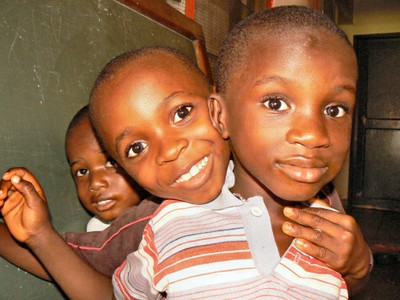Child Sponsorship background from Monrovia, Liberia
 SOS Children's Village Monrovia
SOS Children's Village Monrovia
SOS Children's Village Monrovia consists of 15 family houses, where up to 150 children can find a new home, the village director's house, an administration and service area and a small clinic.
Other SOS Projects in Monrovia
The SOS Nursery comprises four classrooms, a classroom for Montessori education, kitchen, multi-purpose hall and ancillary rooms. It is attended by up to 100 children, both from the SOS Children's Village and from the local community
The SOS Youth Home consists of two buildings with a total of twenty bedrooms, a kitchen, a dining hall, and a youth counselling centre. It accommodates 40 young people. For youngsters from the SOS Children's Villages, moving to an SOS Youth Home is usually the first step towards an independent life. SOS mothers, educators and village directors prepare the youngsters very carefully for this important step in their lives. Young people usually stay at the SOS Youth Home until they have finished their education or training and found a job. On average, this takes four years.
In September 1985, an SOS School (primary and secondary) was opened at Monrovia. There are nine classrooms and five special-purpose rooms (physics and chemistry labs, sewing room, typing room, arts and crafts room, and library), as well as a canteen and an administration and service area. Up to 315 pupils get an education at the school. More than half the pupils are from the local community.
Background to Monrovia
Monrovia is the capital city of Liberia. Located on the Atlantic Coast at Cape Mesurado, it lies within Montserrado County, the most populous county in Liberia. Monrovia is the cultural, political and financial hub for the entire country.
Founded in 1822, Monrovia is named in honor of U.S. President James Monroe, a prominent supporter of the colonization of Liberia. The city's economy is dominated by its harbour and government offices. Monrovia's harbour was significantly expanded by U.S. forces during the Second World War and the main exports include latex and iron ore. Materials are also manufactured on-site, such as cement, refined petroleum, food products, bricks and tiles, furniture and chemicals.

 Return to Schools Wikipedia Home page…
Return to Schools Wikipedia Home page…
